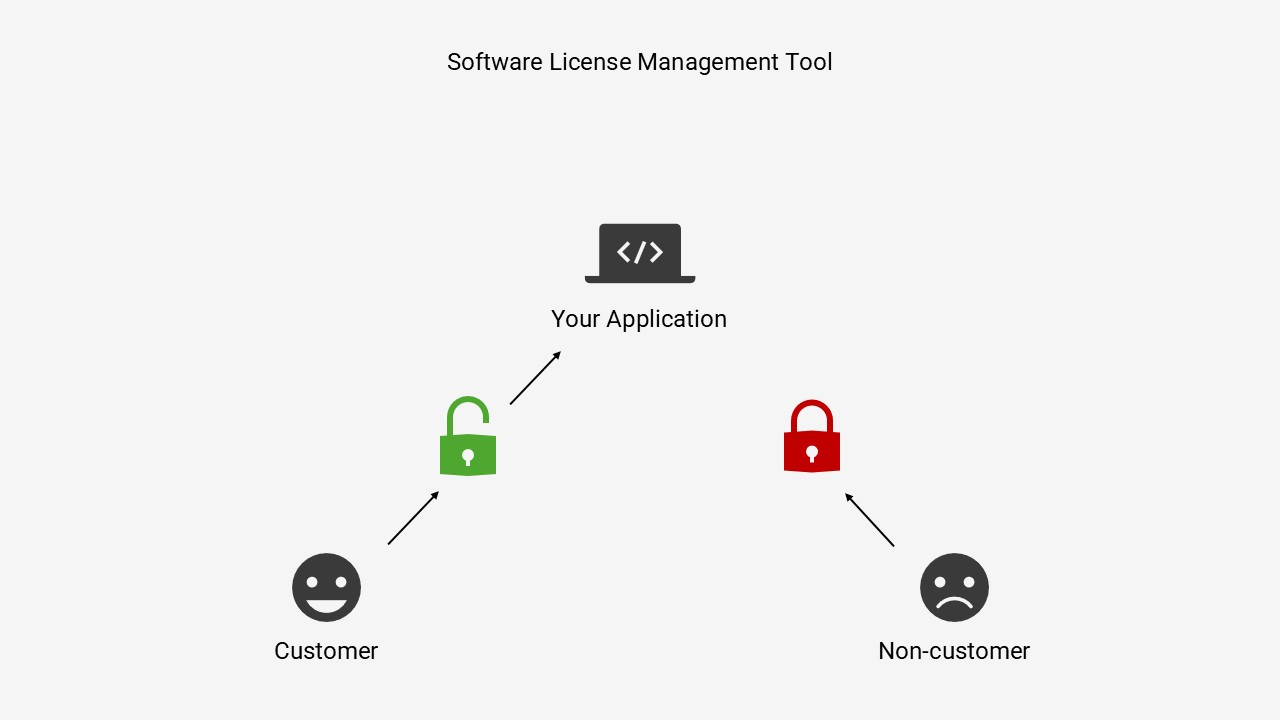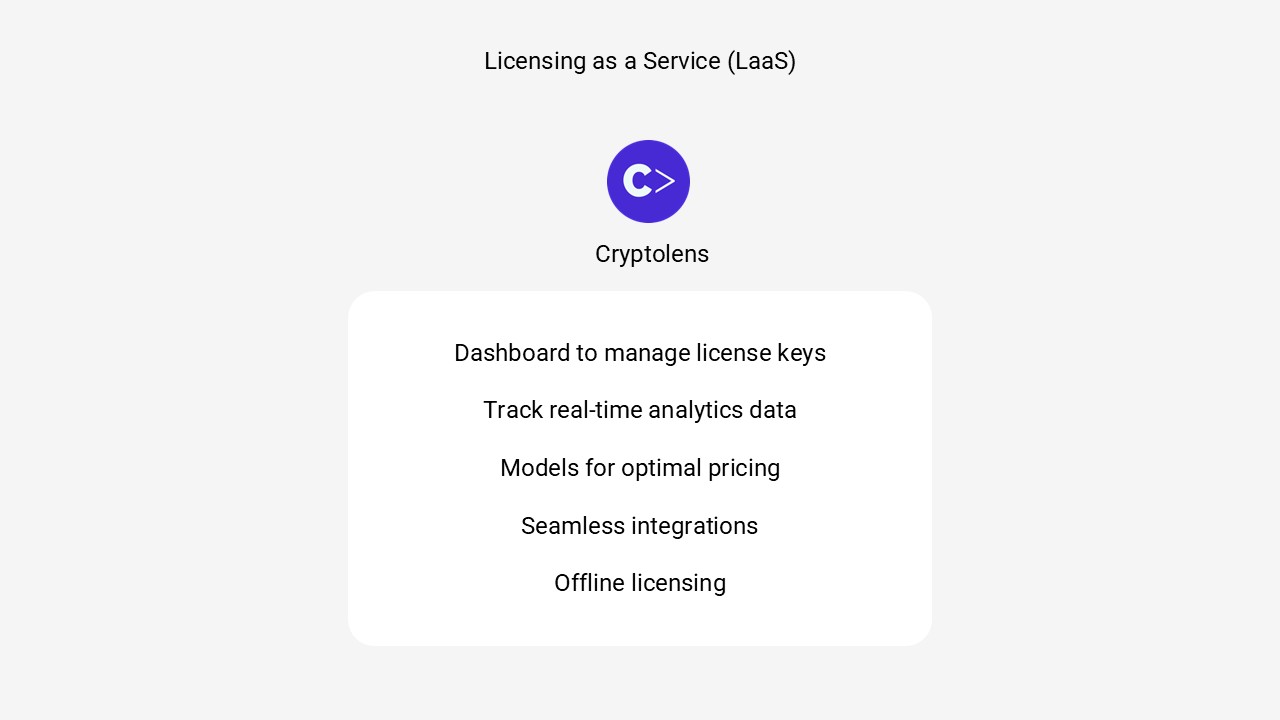A common question in today’s digital world is “How does software licensing work?”. Understanding the basics of software licensing allows you to make smarter decisions, regardless of whether you are buying a software license from a software vendor or handing out licenses to customers as the software vendor.
Why is software licensing important? Well, in order to not over-pay for a software product, consumers must choose the right licensing type, such as a subscription or usage-based model, along with the correct pricing plan. Software vendors, on the other hand, have to make sure their software is able to know who is allowed access and for how long. Ultimately, software licensing is so important to many software vendors that without it, they can simply not sell their products at all.
This blog will first focus on the basics of how software licensing works for a person buying a software license. Then, we will move over to cover how a software vendor uses software licensing to charge effectively for their software product.
Explaining How Software Licensing Works – Consumer’s Guide

What is a software license?
When you are buying a software product from a software vendor, they might have you buy a software license. So, what is a software license? Well, many software products today are actually not purchased in the same way as you might purchase a physical product. When you buy an apple, for example, no one can tell you what to do with that apple once you’ve paid for it.
However, software products usually work slightly differently. Instead of gaining full control over a software product when you have paid for it, you most likely will be granted restricted use over it. A common type of software product today is Software as a Service (SaaS), where you pay a subscription fee every month to keep on using the product. If you don’t pay, you will lose access to the SaaS product.
A software license then establishes the terms and rules that apply when you are using the product. When you buy a license to use a certain software product, you agree that you will pay a recurring sum every month to continue to use the product, for example.
What happens when you don’t pay?
In a similar way to a driver’s license, a software vendor can choose to withdraw your software license if you do not comply with the software license agreement. Instead of speeding and losing a driver’s license, software licenses are usually withdrawn when you fail to pay the recurring subscription fee. That means that your ability to use the software product gets restricted to partial use, or you might not be able to use the product at all.
Great, but how can a software product know that I as the consumer have paid my latest subscription? Well, that’s where license keys come in! Some applications force you to insert a license key before you are allowed to use it. When you pay your first fee to the software company, you might then get a license key string (usually a short combination of letters) that you have to insert into the application. Today, many companies tie these license keys to a user account, so you simply have to log in to your account and the application knows what license keys are associated with that account (account-based licensing).
When you try to access the application after failing to pay your latest subscription fee, the software licensing system will realize that the key you are inserting is invalid. Then, it will not allow you to use the application.
Pricing plans and licensing models – Save money with software licensing
Now I want to mention how you can use your software licensing knowledge to save money as a consumer of software products using pricing plans. Many SaaS products can be purchased (or licensed) on different pricing plans, where each pricing plan has a different set of features that you have access to. For example, a SaaS product can have a Basic and Advanced pricing plan. The Basic plan might cost $50/month and only include the basic features of the app. The Advanced plan then unlocks more advanced features and might instead cost $100/month.
As a consumer, you will naturally choose whatever pricing plan suits your needs. You might begin on the Basic plan to find out if you really need the product. If you do, you can simply upgrade to the Advanced plan when the time is right. That’s pretty simple, right?
However, when the product gets more complicated, so may the pricing plan options. You might be able to choose between different licensing models, for example. The pay-per-use licensing model is quite common. Then, you pay each time you use a specific feature in the product. Accounting software might charge users for each report that is generated, for example.
Instead of taking the easy way out and choosing the biggest pricing plan just in case, thinking a bit longer and investigating what pricing plan you really need can then save you a lot of money in the long run. Without the ability to choose pricing plans, all software products would have to be sold at a standard price, which could mean that you overpay for a product that you don’t use that much. Thanks to software licensing, you can then access more software products at more affordable prices!
How Software Licensing Works for Software Vendors
As previously mentioned, a customer is able to pay an appropriate price for the software product thanks to software licensing. If it works optimally, small users don’t feel like they are overpaying, but you can still have larger users pay a more reasonable price. For software vendors, there is a great benefit to be had if your customers feel like they are paying an appropriate price. It can enable you to get more customers while big users of your product still pay a fair price.
Let’s now focus on how to implement a software licensing solution. Firstly, what does such a software licensing system need to do? Well, the most basic task is of course to establish a lock in the application that requires a user to interest a license key. Then, it also has to be able to check the validity of the inserted license key.
Can you code such a system yourself? Yes, of course you can, but it will take time. A lot of time. Not only will it take time to develop, but you also have to maintain the system and make it scalable. If you don’t you may run the risk of getting angry emails from customers saying they can’t access the product they pay good money for, and that’s never a fun email to read. Additionally, coding advanced licensing features such as usage-based licensing or offline license verifications is not an easy thing to do (if you want to learn more, here is a quick post about in-house VS outsourcing software licensing).
As a result, more and more software developers are today outsourcing software licensing to experts, which is the topic of the rest of this blog post.

Implementing a Software Licensing Solution
A cloud-based Licensing as a Service (LaaS) provider such as Cryptolens will do most of the heavy lifting. When a user of your software signs up, your software sends a request to our license server where the information about all of your licenses is stored. The license server then checks if all of the requirements are met. For example, was the customer’s last payment successful?
If all of the requirements are satisfied, the license server sends a response back to your software that tells it to run as normal. If, for example, the customer did not pay their last payment, the license server will tell your software to display a message telling the customer what they need to do to gain access to the software again.
Using our dashboard, you can manage the license keys you have created and effortlessly implement any licensing model. You can even automate the license creation process using our API. Getting started is a simple three-step process of signing up, installing our SDK, and inserting a short code snippet into your application’s code. We have detailed guides in your favorite programming language so you can implement software licensing within minutes!
Thank you for reading! Here is a short video covering the technical underpinnings of software licensing from the software vendor perspective: